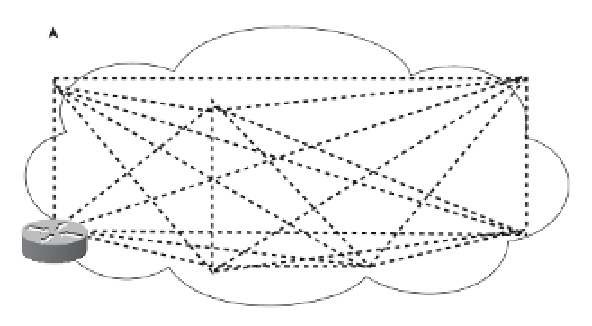Information Technology Reference
In-Depth Information
reduce the number of required mesh links between iBGP peers. Some routers are selected
to become the route reflectors to serve several other routers that act as route-reflector
clients. Route reflectors allow a router to advertise or reflect routes to clients. The route re-
flector and its clients form a cluster. All client routers in the cluster peer with the route re-
flectors within the cluster. The route reflectors also peer with all other route reflectors in
the internetwork. A cluster can have more than one route reflector.
In Figure 11-11, without route reflectors, all iBGP routers are configured in an iBGP mesh,
as required by the protocol. When Routers A and G become route reflectors, they peer
with Routers C and D; Router B becomes a route reflector for Routers E and F. Routers A,
B, and G peer among each other.
Full IBGP Mesh Without RR
To A S 2
To A S 1
AS 100
B
A
G
C
F
E
D
To A S 3
To A S 6
To A S 5
To A S 4
IBGP Connections Reduced with RR
To A S 2
To A S 1
AS 100
B
A
G
C
F
Cluster 10
Cluster
D
E
To A S 3
To A S 6
To A S 4
To A S 5
Figure 11-11
Route Reflectors
Note:
The combination of the route reflector and its clients is called a cluster. In Figure 11-11,
Routers A, G, C, and D form a cluster. Routers B, E, and F form another cluster.
































